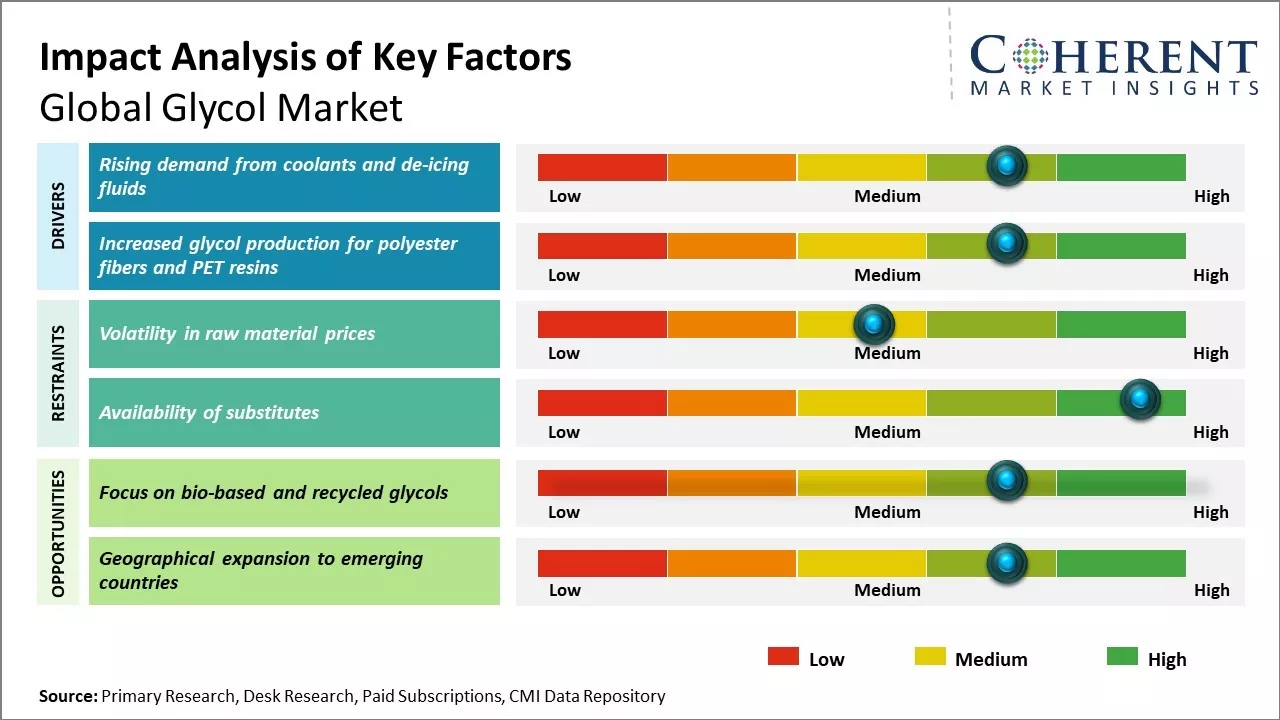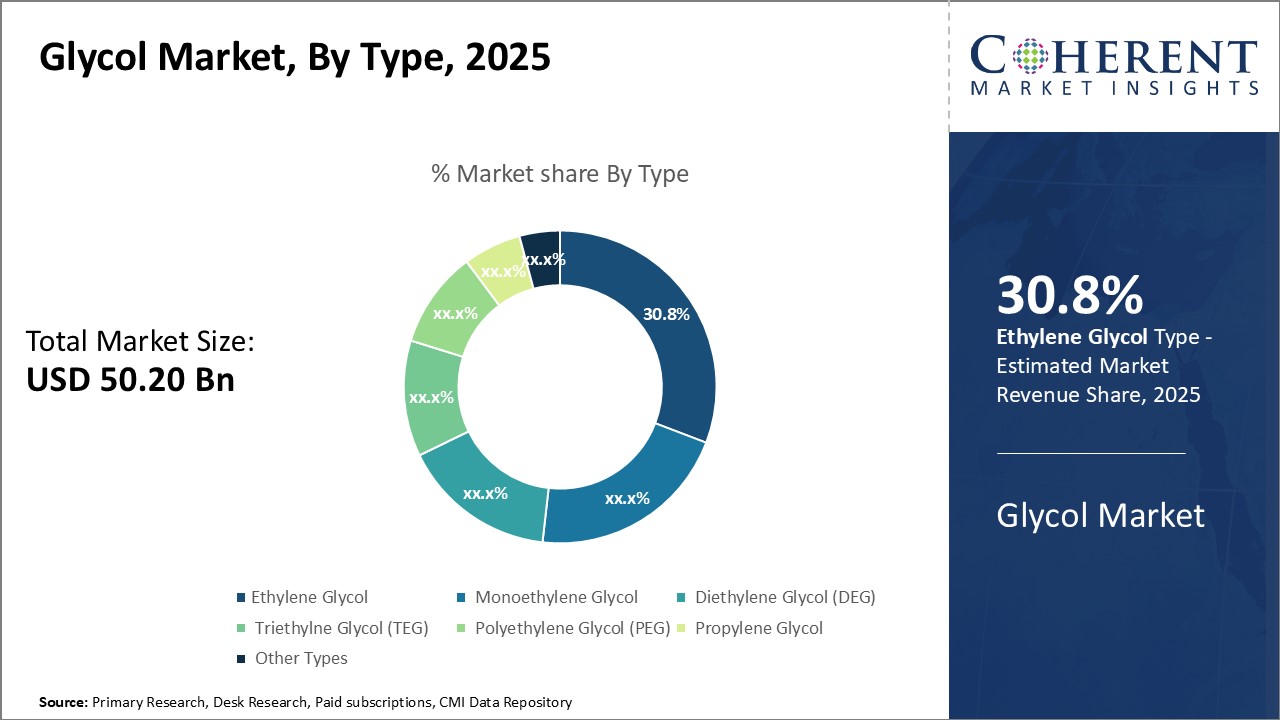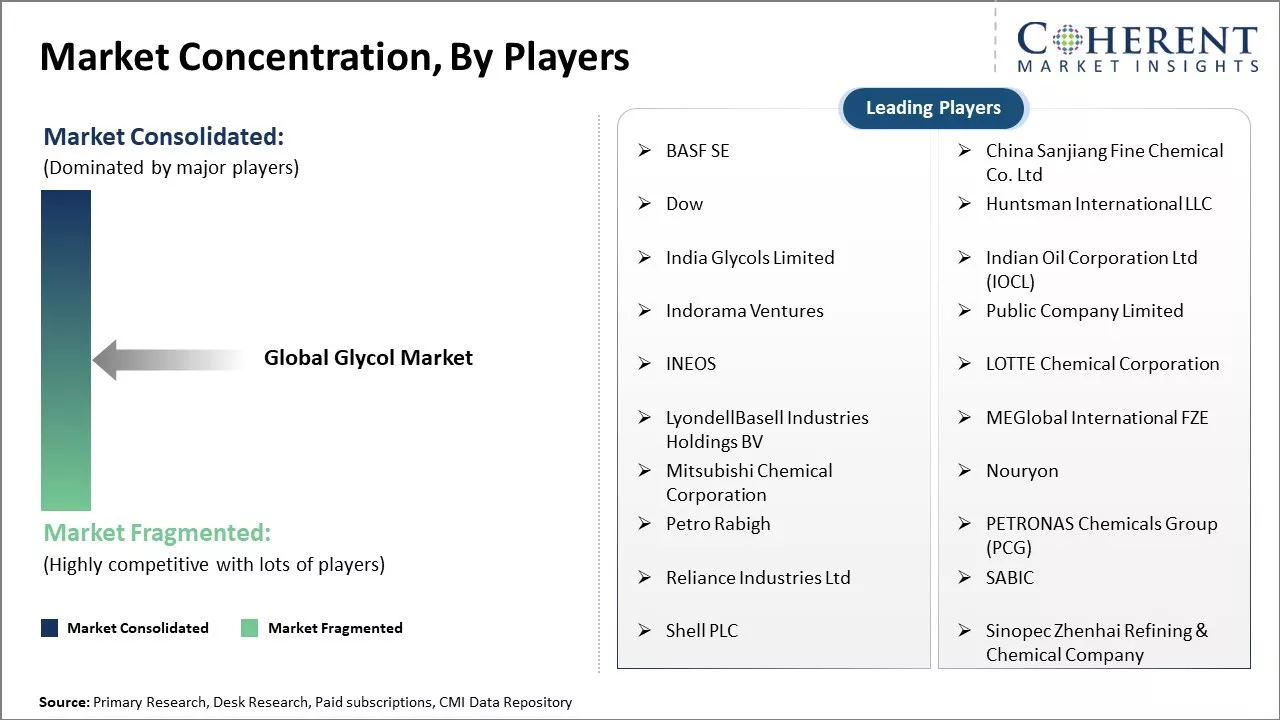The glycol market is estimated to be valued at USD 50.20 Bn in 2025 and is expected to reach USD 81.72 Bn by 2032, exhibiting a compound annual growth rate (CAGR) of 7.2% from 2025 to 2032.

Discover market dynamics shaping the industry: Download Free Sample
The glycol market has been witnessing significant growth over the past few years driven by extensive use of glycol in different end-use industries like automotive, aviation, construction, and others. Glycol acts as an anti-freeze agent, coolant, and de-icing fluid in automobiles as well as aircrafts and finds wide application in HVAC systems and construction materials like insulation panels, glazing, and coatings. Growth in automotive production across regions, rising number of air passengers, and increasing construction activities are expected to boost the demand for glycol during the forecast period. Geographically, North America currently dominates the glycol market and is expected to maintain its dominance during the forecast period due to rapid industrialization, economic growth.
Rising demand from coolants and de-icing fluids
With global temperatures rising on average each year, the demand for coolants and de-icing fluids is experiencing steady growth. As the world population expands further into hotter regions and climates, the need for reliable and effective cooling solutions is becoming increasingly vital. Whether it's ensuring the safe operation of industrial machinery or keeping commercial and residential air conditioners running optimally, glycol-based coolants are proving indispensable. Their inherent properties make them a preferable choice over traditional water based coolants.
Glycol remains liquid over a wide range of temperatures without freezing or boiling, enabling it to transfer heat more efficiently. The non-conductive and non-corrosive nature of glycol also helps protect electronic components and metal surfaces from damage. With more sophisticated electronic controls being used across various industries, from automotive to aviation, reliable cooling is a primary concern. Glycol is helping address this concern through its use as a heat transfer fluid in automotive radiators, aircraft de-icers, and other applications. Looking specifically at the aviation sector, regulations now mandate the use of Type 1 de-icing fluids which contain high concentrations of glycol. With air traffic continuing to expand each year across the world, particularly in regions with harsh winters, the demand for aircraft de-icing fluids is steadily growing.

Discover high revenue pocket segments and roadmap to it: Download Free Sample
Insights by Type: Ethylene Glycol Commands the Type Segment Due to Wide Industrial Applicability
Ethylene glycol is expected to account 30.8% share of the global glycol market in the type segment in 2025. This is primarily attributed to the extensive usage of ethylene glycol across a diverse set of industries owing to its desirable physico-chemical properties and affordable cost. As a raw material, ethylene glycol serves as a key ingredient in the production of polyester fibers and polyethylene terephthalate (PET) resins. Given the exponential growth of the textiles and packaging sectors worldwide in recent years, the demand for ethylene glycol from these end-use industries has seen a concurrent rise.
Ethylene glycol also finds widespread application as an antifreeze and coolant in automotive radiators and heating systems. With rising vehicle ownership and increasing requirement for commercial fleet operations, its consumption is steadily climbing in the transportation industry. Furthermore, ethylene glycol is commonly used as a de-icing solution at airports. Its low freezing point and high water solubility makes it ideal for preventing ice formation. Growth in the aviation industry is further propelling the need for ethylene glycol. Its ability to serve diverse needs across vital markets has enabled ethylene glycol to emerge as a market leader compared to other types in the glycol category.
Insights by End-User Industry: Automotive and Transportation Dominates the End-User Segment Due to Substantial Glycol Consumption
The automotive and transportation segment is expected to occupy 42.8% share in the global glycol market in 2025 in terms of end-user industry. This is primarily attributed to the massive requirement of glycol-based automotive antifreeze and coolants within the automotive OEM and aftermarket. With rising vehicle production and sales worldwide, each year coupled with the expansion of the commercial vehicle parc, the amount of ethylene and propylene glycol consumed by the automotive sector continues to surge. These glycols act as an important component in the coolant and heat transfer fluids used across various vehicle systems and components to regulate temperature.
Apart from preventing freezing in cold conditions, glycols efficiently absorb heat and lower the freezing point of water-based liquids to enable efficient engine cooling. Their rust and corrosion inhibiting properties further enhances the lifespan of automotive cooling systems. With innovations in engine and emission technologies, sophisticated antifreeze formulations incorporating advanced glycol chemistries are being increasingly adopted. As vehicles emerge as a necessity for transportation needs globally, the automotive segment will continue powering the glycol market driven by massive consumption directly correlated to manufacturing volumes and vehicular parc expansion.

Need a Different Region or Segment? Download Free Sample
North America currently dominates the global glycol market owing to well-established end-use industries in the region. The region is expected to account for 32.9% of the market share in 2025. The U.S. is the single largest consumer of glycol globally with sizeable demand coming from the automotive, construction, aviation, and other manufacturing sectors. Major glycol producers have established production facilities as well as distribution networks across the U.S. and Canada in order to capitalize on the vast domestic demand. In addition, North America is a net exporter of glycols and related derivatives to international markets. With its proximity to emerging markets in Latin America and strong transportation infrastructure, North America plays a central role in global glycol trade flows.
The Asia Pacific region is poised to be the fastest growing glycol market over the coming years. Rapid industrialization and infrastructure development across the region have bolstered the demand for polyester fibers, unsaturated polyester resins, coolants, and other glycol-based products. Countries with large manufacturing bases such as China, India, Indonesia, and Vietnam contribute significantly to Asia Pacific's glycol consumption. Additionally, these countries serve as major export hubs for glycol-consuming goods like textiles and automobiles. Robust economic growth continues to drive huge investments in glycol-dependent sectors in Asia Pacific. However, limited domestic glycol production in the region means countries rely on imports to satisfy demand. Major producers are considering capacity expansions or new plants in Asia Pacific to tap into its promising glycol market potential.

Get actionable strategies to beat competition: Download Free Sample
Increased glycol production for polyester fibers and PET resins
Glycol, especially ethylene glycol and propylene glycol, serves as a chief raw material in the production of polyester fibers and polyethylene terephthalate (PET) resins. Both polyester and PET have experienced astronomical growth in demand over the past few decades. This can be attributed to their wide usage in textiles, packaging, and other plastic goods. Properties such as strength, durability, stability, and sustainability have made polyester the most popular manufactured fiber globally. Likewise, PET has emerged as the packaging material of choice for beverages due to its lightweight and shatter-resistant qualities.
As developing economies expand their manufacturing capabilities and infrastructure, coupled with the rising global population, the demand for affordable textiles and packaged consumer goods continues to surge. This downstream demand pull effectively fuels greater consumption of glycol upstream during polyester and PET synthesis. Their inherently recyclable nature has garnered industry support for increasing adoption into various product applications as well.
Glycol Market Report Coverage
| Report Coverage | Details | ||
|---|---|---|---|
| Base Year: | 2024 | Market Size in 2025: | USD 50.20 Bn |
| Historical Data for: | 2020 To 2024 | Forecast Period: | 2025 To 2032 |
| Forecast Period 2025 to 2032 CAGR: | 7.2% | 2032 Value Projection: | USD 81.72 Bn |
| Geographies covered: |
|
||
| Segments covered: |
|
||
| Companies covered: |
BASF SE, China Sanjiang Fine Chemical Co. Ltd, Dow, Huntsman International LLC, India Glycols Limited, Indian Oil Corporation Ltd (IOCL), Indorama Ventures, Public Company Limited, INEOS, LOTTE Chemical Corporation, LyondellBasell Industries Holdings BV, MEGlobal International FZE, Mitsubishi Chemical Corporation, Nouryon, Petro Rabigh, PETRONAS Chemicals Group (PCG), Reliance Industries Ltd, SABIC, Shell PLC, Sinopec Zhenhai Refining & Chemical Company |
||
| Growth Drivers: |
|
||
| Restraints & Challenges: |
|
||
Uncover macros and micros vetted on 75+ parameters: Get instant access to report
Key Takeaways from Analyst:
The glycol market is expected to continue growing steadily driven by increasing demand from key end-use industries such as polyester fiber, PET resins, antifreeze & coolants, and others. Rising consumption of polyester products worldwide and growing automobile production are major drivers propelling the glycol market. However, regulations regarding vehicular emissions may act as a restraint to some extent as they push for the replacement of glycol-based antifreeze with less toxic alternatives.
North America currently dominates the global glycol market. Expanding polyester fiber and PET resins industries provides a massive growth opportunity in the region. North America and Western Europe are also sizable markets but are expected to see relatively lower growth compared to Asia Pacific.
Ethylene glycol continues to dominate demand mainly driven by its use in polyester production while propylene glycol is gaining market share due to growing preference in automotive coolants. Adoption of bio-based glycols provides a good opportunity for market expansion as they help reduce dependency on crude oil. However, the commercial production of bio-glycols needs to increase significantly to make a dent in the market.
Market Challenges: Volatility in raw material prices
Volatility in raw material prices has been a major restraining factor for the growth of the glycol market in recent years. Glycol is primarily made from fossil fuel-based feedstock such as natural gas and crude oil. The prices of these raw materials are highly unpredictable and fluctuate frequently depending on global economic and geopolitical conditions. Since the start of the COVID-19 pandemic in 2020, the prices of crude oil and natural gas witnessed a lot of volatility due to uncertainty in demand and disrupted supply chains.
Market Opportunities: Focus on bio-based and recycled glycols
Focus on bio-based and recycled glycols has the potential to be a great opportunity for growth in the glycol market. As consumers become increasingly environmentally conscious, they are demanding more sustainable products. Bio-based and recycled glycols address this demand as they are derived from renewable resources rather than fossil fuels. Some of the current trends that indicate growth potential for bio-based and recycled glycols include an increasing preference for green chemicals and building materials.
Share
Share
About Author
Yash Doshi is a Senior Management Consultant. He has 12+ years of experience in conducting research and handling consulting projects across verticals in APAC, EMEA, and the Americas.
He brings strong acumen in helping chemical companies navigate complex challenges and identify growth opportunities. He has deep expertise across the chemicals value chain, including commodity, specialty and fine chemicals, plastics and polymers, and petrochemicals. Yash is a sought-after speaker at industry conferences and contributes to various publications on topics related commodity, specialty and fine chemicals, plastics and polymers, and petrochemicals.
Missing comfort of reading report in your local language? Find your preferred language :
Transform your Strategy with Exclusive Trending Reports :
Frequently Asked Questions
Joining thousands of companies around the world committed to making the Excellent Business Solutions.
View All Our Clients